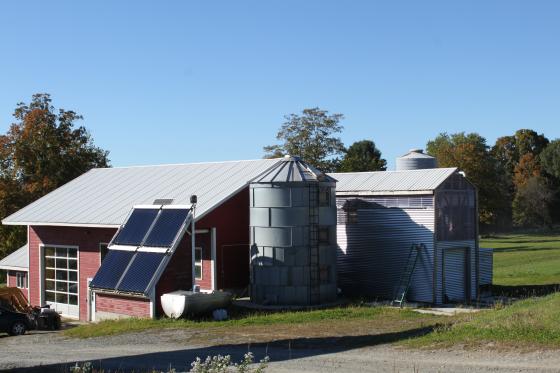Posted February 25, 2014 at 09:46am by
State Leadership Reacts to Preliminary Ag Census Data: New Numbers Paint Positive Picture of Vermont Agriculture

The U.S. Department of Agriculture (USDA) National Agriculture Statistic Service (NASS) released preliminary findings from the 2012 census. Conducted every five years, the ag census provides the most comprehensive data available about agriculture in Vermont and across the nation (see attached .pdf for the NASS report).
For detailed information about the Ag Census, please contact:
Gary R. Keough, State Statistician
USDA National Agricultural Statistics Service
New England Field Office
603-227-3129
Vermont agriculture is trending in a positive direction. Some highlights:
- The overall number of farms in Vermont has increased by 5% in the last five years, from 6,984, to 7,338.
- Vermont agricultural land base has also increased 1% in the past five years, from 1,233,313 acres to 1,251,713 acres
- As a result of the growth in these two areas, the overall Market value of Vermont agricultural products sold has grown 15%, from $673,713,000 to $776,105,000.
- More women are farming: the number of farms principally operated by females is up 12% and makeup 22% of Vermont’s principal farm operators.
- There’s also been a slight increase in the number of minority-operated farms.
Other findings of note:
- The farming population is aging – in 2007, the average age of a Vermont farmer was 56.5 years, today, the average age is 57.3 years old.
- However, new farmers are joining the ranks - there has been a 22% increase of farmers in the 25-34 year age bracket. The number of new farmers, those who’ve been on their farms less than ten years, has also increased. New farmers accounted for 28% of Vermont principal farm operators compared to 26% in 2007.
- Almost half of farmers still have other jobs – only 51% of Vermont farm operators say farming is their primary occupation. This is an increase from 2007, when less than half (49.5%) of farm operators reported farming as their primary occupation.
Vermont leadership reacts:
“Vermont’s agricultural heritage is alive and well,” Gov. Shumlin said, “Our farms are evolving with the changing market, with more farmers producing the high quality products that Vermont is known for. This census indicates our farm economy is solid and our working lands are increasing in size. We will use this information to continue to support our farmers and all the community businesses that depend upon a healthy agricultural industry.” Governor Peter Shumlin.
In a joint statement, Senator Patrick Leahy (D), Senator Bernie Sanders (I) and Representative Peter Welch (D) said: “These trends are good news for Vermont. The rise in the number of farms and the increasing value of our agricultural products is a credit to Vermont farmers’ pioneering work in the local and sustainable food movement. We are especially cheered by the 30 percent increase in young farmers’ in our state. That bodes well for the future of Vermont agriculture and its importance to the overall economy.”
“These findings paint a positive picture of Vermont’s community-based system of agriculture. This is a great story for our state – more acreage in agriculture, more farms overall, an increase in the overall value of our agricultural products – this is how we can ensure our working landscape will thrive for generations to come. I am also very encouraged to see new perspectives in agriculture – more women, young people, and diversity add to the fabric of Vermont farming. This is great news for Vermont.” Chuck Ross, Secretary, Vermont Agency of Agriculture, Food, & Markets.
“At the Farm Service Agency, we look forward to the release of the NASS census Vermont data since it is an important tool in our implementation of USDA farm programs.” Robert Paquin, State Exec. Director, USDA Farm Service Agency
“The Census of Agriculture is one of the vital sources of information for the Farm to Plate Strategic Plan,” said Ellen Kahler, Executive Director of the Vermont Sustainable Jobs Fund. “The last Census was released in 2007, right on the cusp of the tremendous growth we’ve witnessed across Vermont’s food system. We’re very excited to analyze the 2012 Census and report back on changes in the number of farms, the value of Vermont’s agricultural products, direct sales figures, and other key indicators of progress.” Ellen Kahler, Executive Director, Vermont Sustainable Jobs Fund
###
About the Vermont Agency of Agriculture, Food, and Markets: VAAFM facilitates, supports and encourages the growth and viability of agriculture in Vermont while protecting the working landscape, human health, animal health, plant health, consumers and the environment.
